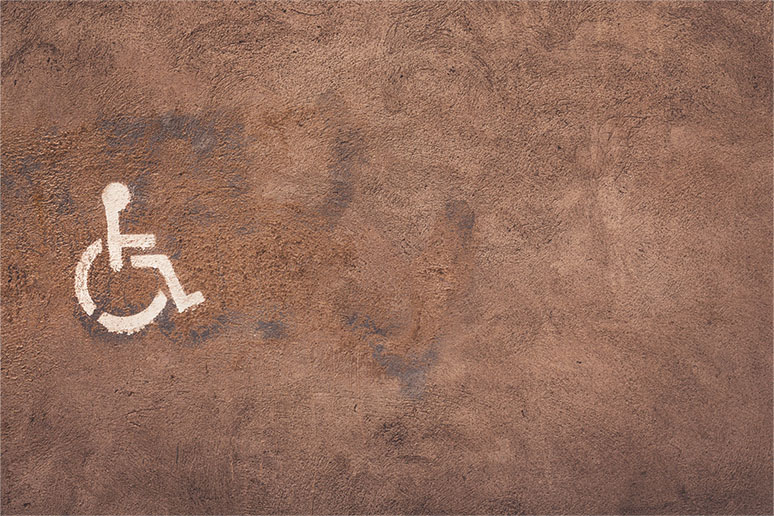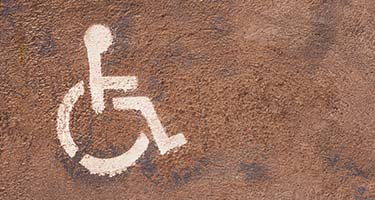We use our homes every day. We know every nook and cranny. Every step. Every turn. Never once giving thought to the question: what if I were in a wheelchair? For many spinal cord injury survivors, this is a challenge they face every day.

Image credit: Tim Mossholder
Most likely your home was not originally designed with the unique needs of an SCI survivor in mind. However, with just a bit of consideration, a few simple changes and wheelchair accessible home modifications can be made that will make a big difference to your quality of life.
The purpose of this article is to offer both SCI patients and care providers a few simple considerations regarding paraplegic home modifications to make home life less overwhelming – and easier to enjoy.
How to make stairs wheelchair accessible
They’re the first and most obvious obstacle of any person who uses a wheelchair when returning home: stairs. Fortunately, there are several simple solutions for making stairs and stairways wheelchair accessible, and most of them are affordable.
Ramps enable simple, easy access over most stairs, from exterior steps to interior landings between floors/rooms. And with a range of styles and functions, including folding and portable solutions, virtually any set of steps and stairs can be made wheelchair accessible.
For navigating the longer sets of stairs found in two-story homes, stairlifts and stair climbers can easily be installed as either a permanent or portable modification, offering people who use wheelchairs accessibility and enjoyment of the entire house.
Wheelchair accessible bathroom ideas
For people who use wheelchairs, the bathroom presents many obstacles that can result in frustration and injury. It’s important to consider what types of wheelchair accessible modifications will make life easier. For sinks and countertops, a minimum of 27 inches of knee clearance should exist to allow a person in a wheelchair to get close enough for normal use.
For toilets, a seat height of 17 to 19 inches is recommended for comfortable and easy wheelchair transfers. This may require the installation of an elevated base, thicker seat, or plastic toilet seat insert to raise the height. For increased mobility, grab bars are tremendously helpful. Ideally, bars on either side of the toilet should be no more than 36 inches apart, and a single bar should be within 18 inches of the nearest wall.
Showers and tubs create a different set of challenges that can be solved by asking the right questions.
Would your shower be more accessible with a fixed shower seat?
Angled grab bars for both sitting and standing? Perhaps a walk-in tub to prevent having to climb over treacherous sidewalls?
Doorknobs can be difficult
For many in wheelchairs, simply leaning out from one’s chair to turn a doorknob can be a real challenge. Replacing doorknobs with push/pull lever handles will significantly increase accessibility, as will installing automatic doors. Easy to install, it’s a solution that works on almost any door and can be controlled with the wave of a hand or by control switches directly on one’s wheelchair.
Is it time to rearrange the furniture?
It’s easy to overlook how simple adjustments can raise the quality of life for the SCI survivor who uses a wheelchair but rearranging furniture is a simple yet effective wheelchair accessible home modification.
Start with the layout of your furniture; what once looked aesthetically pleasing is not so special if those in wheelchairs have difficulty getting around the home.
With a few simple changes, most room layouts can eliminate sharp turns or narrow passageways that make getting around in a wheelchair difficult. Consider, too, the placement of everyday items to maximise accessibility for wheelchair users.
Invest in wheelchair accessible surfaces
Investing in wheelchair accessible surfaces is one of the most important paraplegic home modifications that you can make to improve the accessibility of the home.
It’s no secret wheelchairs can navigate over some surfaces better than others. Some questions to ask yourself include: are my carpets too thick? Are my tile surfaces too slick? How difficult will it be for a wheelchair to roll over the risers between my doorways?
Do you have further questions? Get your SCI questions answered by the Navigator Team by sending us a message or contacting us on 0800 373 858.









